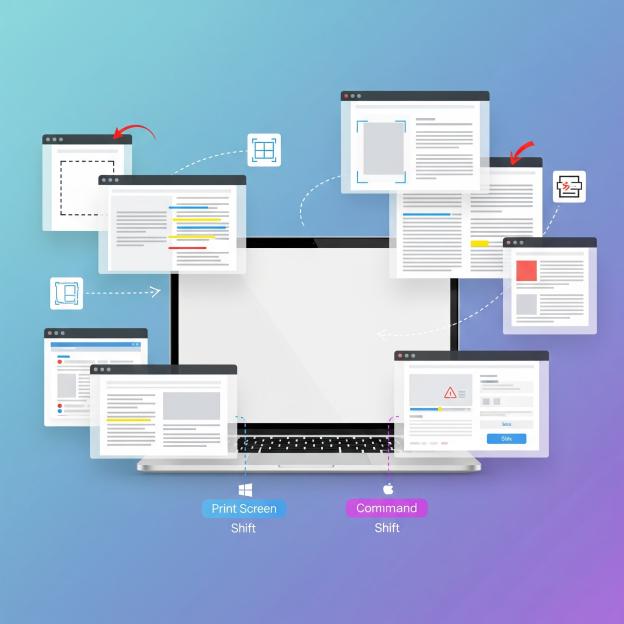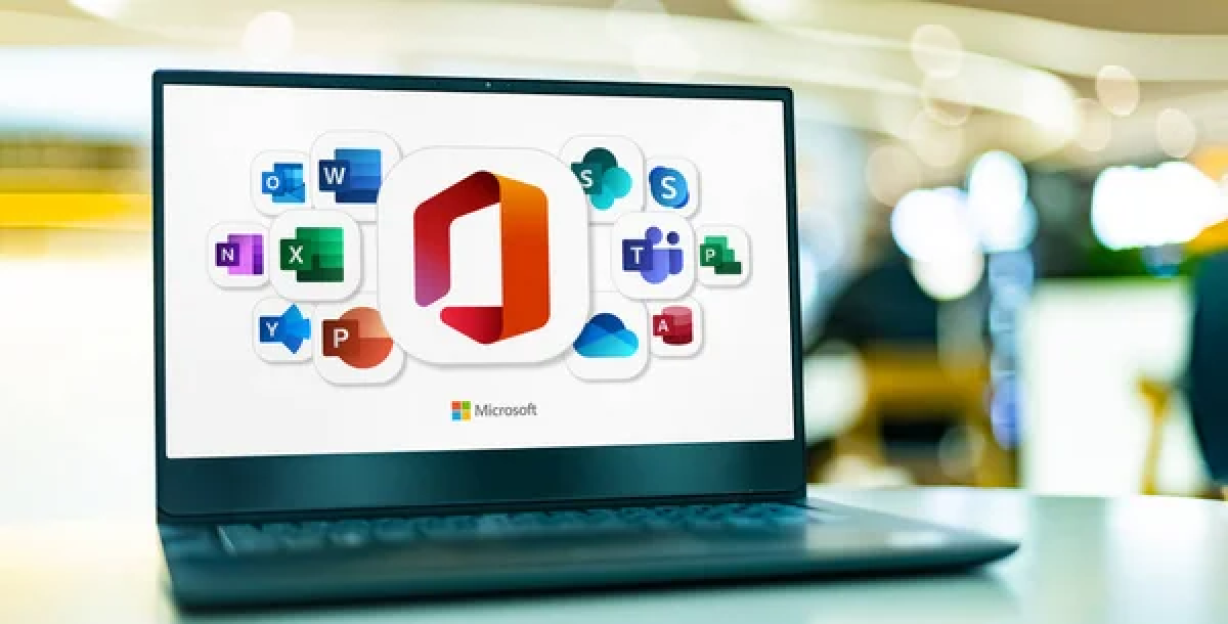Why Screen Sharing Apps Matter in 2025
In today’s increasingly interconnected digital landscape, screen sharing has evolved from a convenient feature to an essential tool that powers remote work, virtual collaboration, and seamless communication across global teams. As workplaces continue to embrace hybrid models and remote arrangements, the ability to share screens has become fundamental to maintaining productivity and fostering effective teamwork.
According to recent data, the screen sharing software market is projected to grow significantly, with estimates suggesting the market will reach over $1.2 billion by 2033, expanding at a CAGR of 6.8% between 2025 and 2033. This growth reflects the rising importance of visual collaboration in our professional lives and the continuous evolution of these tools to meet modern workplace demands.
In this comprehensive guide, we’ll explore the best screen sharing applications available in 2025, analyzing their key features, security considerations, integration capabilities, and ideal use cases. Whether you’re a remote worker, team leader, IT professional, or just someone looking to leverage screen sharing for better communication, this article will help you navigate the diverse landscape of screen sharing solutions to find the perfect fit for your needs.
What Is Screen Sharing and Why Is It Essential?
Screen sharing technology allows users to broadcast their screen content in real-time to other users over the internet. This capability has revolutionized how we collaborate, troubleshoot, present, and connect in virtual environments.
Key Benefits of Screen Sharing Apps:
- Enhanced Visual Communication: Screen sharing bridges the gap between in-person and virtual interactions by providing visual context, making complex concepts easier to understand.
- Real-Time Collaboration: Teams can work together on documents, designs, code, or presentations simultaneously, regardless of their physical location.
- Efficient Troubleshooting: Technical support becomes significantly more effective when issues can be viewed directly rather than described verbally.
- Engaging Presentations: Presenters can deliver more dynamic and interactive content when audience members can see exactly what they’re referring to.
- Streamlined Decision-Making: Sharing visual data helps teams make informed decisions quickly by ensuring everyone has access to the same information.
Top Screen Sharing Apps of 2025
1. Zoom
Best for: All-purpose video conferencing with reliable screen sharing
Zoom remains a powerhouse in the virtual meeting space, offering robust screen sharing capabilities that have continued to evolve since its surge in popularity during the early 2020s.
Key Features:
- Simultaneous screen sharing allowing multiple participants to share at once
- Annotation tools for real-time markup and highlighting
- Selective application sharing to protect privacy
- Mobile screen sharing from iOS and Android devices
- Recording capabilities for future reference
Security Features:
- End-to-end encryption
- Meeting password protection
- Waiting room functionality
- Screen sharing permission controls
Pricing: Free plan available with limited features; paid plans start at approximately $14.99/month per host.
2. Microsoft Teams
Best for: Organizations already integrated with Microsoft 365
Microsoft Teams has established itself as a comprehensive collaboration hub with powerful screen sharing functionality seamlessly integrated with other Microsoft services.
Key Features:
- Direct integration with Office 365 applications
- Background blur during screen sharing
- One-click screen sharing from meetings
- Remote control capabilities for collaborative troubleshooting
- Advanced presentation options including PowerPoint Live
Security Features:
- Multi-factor authentication
- Advanced threat protection
- Compliance with major regulatory standards
- Granular permission settings
Pricing: Basic features free with Microsoft 365 subscription; dedicated plans start around $4/user/month.
3. Google Meet
Best for: Google Workspace users seeking seamless integration
Google Meet offers a streamlined screen sharing experience, particularly valuable for those already embedded in the Google ecosystem.
Key Features:
- Present directly from Google Docs, Sheets, or Slides
- Tab-specific sharing options for enhanced privacy
- Automatic optimization for video content
- Low-latency sharing performance
- Companion mode for hybrid meetings
Security Features:
- End-to-end encryption
- Advanced anti-abuse measures
- Two-step verification
- Enterprise-grade security protocols
Pricing: Basic version free with Google account; enhanced features with Google Workspace starting around $6/user/month.
4. Slack
Best for: Teams that already use Slack as their primary communication hub
Slack has evolved significantly to incorporate robust screen sharing functionality directly within its chat-based collaboration platform.
Key Features:
- Screen sharing during Huddles (audio calls)
- Drawing and annotation tools
- Quick sharing via slash commands
- Multi-person screen sharing
- Integration with existing Slack workflows
Security Features:
- Enterprise-grade encryption
- Identity verification
- Data loss prevention
- Compliance certifications
Pricing: Limited features in free plan; paid plans start at approximately $7.25/user/month.
5. Dialpad
Best for: Business communication with integrated AI capabilities
Dialpad stands out by combining screen sharing with advanced AI-powered features that enhance the collaboration experience.
Key Features:
- AI-powered transcriptions of screen sharing sessions
- Real-time captioning during presentations
- Instant screen sharing from phone calls
- Guest access without requiring app installation
- Comprehensive analytics on screen sharing usage
Security Features:
- SOC2 Type II compliance
- End-to-end encryption
- Enterprise-grade security measures
- Role-based access controls
Pricing: Starts at approximately $15/user/month with business plans.
6. AnyDesk
Best for: Remote desktop access and technical support
AnyDesk specializes in high-performance remote desktop connections that enable not just viewing but controlling remote screens.
Key Features:
- Ultra-low latency connections
- Cross-platform compatibility
- Custom branding options
- Remote printing capabilities
- File transfer during screen sharing
Security Features:
- Banking-standard TLS 1.2 encryption
- Two-factor authentication
- Session recording
- Granular access control
Pricing: Free for personal use; business plans start at approximately $10.90/month.
7. ClickUp
Best for: Project management teams needing integrated collaboration
ClickUp combines project management with screen sharing capabilities, creating a unified workspace for productive collaboration.
Key Features:
- Screen recording with automatic transcription
- Whiteboard integration with screen sharing
- Task-specific screen sharing capabilities
- Screen capture with annotation
- Integration with project workflows
Security Features:
- SOC2 compliance
- Two-factor authentication
- Single sign-on capabilities
- Custom permission settings
Pricing: Free plan available; business plans start at around $7/user/month.
8. Zight (formerly CloudApp)
Best for: Asynchronous screen sharing and visual communication
Zight offers powerful screen recording and sharing capabilities designed for teams that don’t always need to collaborate in real-time.
Key Features:
- High-quality screen recording with GIF creation
- Cloud storage for all screen captures
- Screenshot annotation tools
- Video editing capabilities
- Analytics on viewer engagement
Security Features:
- SOC2 compliance
- Password protection for shared links
- Enterprise-grade encryption
- Secure cloud storage
Pricing: Limited free plan available; premium plans start at approximately $10/user/month.
9. CoScreen
Best for: Collaborative development and pair programming
CoScreen represents the next generation of collaboration tools with its unique approach to shared workspaces.
Key Features:
- Multi-user screen sharing simultaneously
- Drag-and-drop window sharing
- Collaborative control of applications
- Shared terminal for developers
- Low latency for real-time coding
Security Features:
- End-to-end encryption
- Secure code sharing protocols
- Permission-based access control
- Multi-factor authentication
Pricing: Free plan available; team plans start at around $12/user/month.
10. Fullview
Best for: Customer support and user experience professionals
Fullview specializes in advanced co-browsing and screen sharing designed specifically for customer support scenarios.
Key Features:
- Auto-blurring of sensitive information
- Session replays for quality assurance
- Interactive troubleshooting tools
- Detailed analytics on support interactions
- Integration with CRM platforms
Security Features:
- GDPR compliance
- Automatic PII blurring
- End-to-end encryption
- Custom data storage options (EU or US servers)
Pricing: Start-up plans begin at approximately $19/agent/month.
Security and Privacy Considerations in Screen Sharing
As screen sharing involves potentially sensitive data, security considerations should be paramount when selecting a solution. In 2025, top security features to look for include:
Essential Security Features:
- End-to-End Encryption: Ensures that data shared during sessions cannot be intercepted by third parties.
- Access Controls: Look for apps that allow granular control over who can share screens and when.
- Selective Sharing Options: The ability to share only specific applications or windows rather than your entire screen helps prevent accidental exposure of sensitive information.
- Compliance Certifications: Depending on your industry, look for solutions that meet standards like HIPAA, GDPR, SOC2, etc.
- Secure Authentication: Multi-factor authentication adds an essential layer of protection.
Privacy Best Practices:
- Close Unnecessary Applications: Before sharing your screen, close any applications or documents containing sensitive information.
- Use Virtual Backgrounds: When applicable, use virtual backgrounds to maintain privacy of your physical workspace.
- Regular Software Updates: Keep your screen sharing applications updated to protect against security vulnerabilities.
- Review Recordings Policies: Understand how recordings are stored and who has access to them.
- Notification Systems: Choose apps that notify all participants when recording or screen sharing begins.
Screen Sharing on Mobile Devices
Mobile screen sharing has evolved significantly in recent years, becoming increasingly important as workforces become more flexible and mobile-first approaches gain traction.
Top Mobile Screen Sharing Apps:
- AirDroid Cast: Offers seamless Android-to-PC screen mirroring with both wireless and USB connectivity options.
- ApowerMirror: Provides cross-platform functionality with Android and iOS screen mirroring to computers.
- Vysor: Specializes in Android screen sharing with control capabilities from computers.
- AnyViewer: Offers secure remote access and screen sharing across multiple devices.
- LetsView: Delivers simple wireless screen mirroring for various devices including smart TVs.
Mobile Screen Sharing Challenges and Solutions:
- Battery Consumption: Screen sharing can drain mobile batteries quickly. Use power-saving modes or keep devices plugged in during extended sharing sessions.
- Data Usage: Mobile screen sharing can consume significant data. Connect to Wi-Fi when possible.
- Connection Stability: Mobile connections may be less stable. Consider using dedicated apps rather than browser-based solutions when on mobile.
- Limited Functionality: Some mobile screen sharing lacks annotation tools available on desktop versions. Choose apps that prioritize mobile feature parity.
Integration Capabilities and Ecosystem Considerations
The most effective screen sharing solutions don’t exist in isolationâthey integrate seamlessly with existing productivity tools and workflows.
Key Integration Points:
- Calendar Systems: Look for screen sharing apps that integrate with Google Calendar, Outlook, or other scheduling tools for one-click meeting access.
- Productivity Suites: Integration with Microsoft 365, Google Workspace, or similar ecosystems enhances workflow efficiency.
- Project Management Tools: Connections to Asana, Trello, Monday.com, or similar platforms help contextualize screen sharing within project workflows.
- CRM Systems: Integration with Salesforce, HubSpot, or other CRM platforms is valuable for sales and support teams.
- Development Tools: For technical teams, integration with GitHub, GitLab, or development environments facilitates collaborative coding.
Ecosystem Lock-In Considerations:
While tight integration offers convenience, be mindful of ecosystem lock-in when selecting a screen sharing solution. Consider:
- Export Capabilities: Can recordings and shared content be easily exported to standard formats?
- API Availability: Does the platform offer APIs for custom integrations if needed?
- Cross-Platform Support: Does the solution work across different operating systems and devices?
- Future Scalability: Will the solution accommodate your team’s growth and changing needs?
Screen Sharing for Specific Use Cases
Different professions and industries have unique requirements for screen sharing functionality. Here’s how various sectors can leverage these tools effectively:
Education and Training
Teachers, trainers, and educational institutions benefit from screen sharing features like:
- Recording capabilities for asynchronous learning
- Annotation tools for highlighting key concepts
- Breakout room functionality for group work
- Attention tracking to gauge student engagement
- Interactive whiteboard integration
Recommended Apps: Zoom, Microsoft Teams, Google Meet
IT Support and Technical Assistance
IT professionals require robust remote capabilities including:
- Remote control functionality
- Detailed system diagnostics during sharing
- Multi-monitor support
- Session recording for documentation
- Secure access to sensitive systems
Recommended Apps: AnyDesk, TeamViewer, Dialpad
Creative Collaboration
Designers, video editors, and creative professionals need:
- High-definition screen sharing
- Color-accurate display
- Low-latency connections for real-time feedback
- Version comparison capabilities
- Drawing and markup tools
Recommended Apps: CoScreen, Zoom, Slack
Sales and Client Presentations
Sales professionals benefit from features like:
- Professional presenting modes
- Analytics on viewer engagement
- Customizable branding options
- Integration with CRM for lead tracking
- Quick-share capabilities for impromptu demos
Recommended Apps: Zight, Dialpad, Zoom
Healthcare Providers
Medical professionals using telemedicine need:
- HIPAA-compliant platforms
- High-security encryption
- Clear visual quality for diagnostic purposes
- Reliable connections
- Patient-friendly interfaces
Recommended Apps: Microsoft Teams, Zoom Healthcare, specialized telemedicine platforms
Future Trends in Screen Sharing Technology
The landscape of screen sharing continues to evolve rapidly. Here are the emerging trends shaping the future of this technology:
1. AI-Enhanced Screen Sharing
Artificial intelligence is transforming screen sharing with features like:
- Automatic highlighting of important content
- Real-time translation of shared screens
- Smart noise suppression during presentations
- Automated note-taking and action item extraction
- Personalized viewing experiences based on user roles
2. Virtual and Augmented Reality Integration
As VR/AR technologies mature, screen sharing is expanding into three-dimensional spaces:
- Virtual meeting rooms with shared screens as objects
- 3D model manipulation during screen sharing
- Spatial audio for more immersive presentations
- AR annotations overlaid on physical environments
- Holographic presenting capabilities
3. Advanced Security Protocols
Security continues to advance with features like:
- Biometric authentication for screen sharing access
- Zero-knowledge encryption models
- AI-powered anomaly detection during sharing
- Blockchain verification of session integrity
- Quantum-resistant encryption methods
4. Enhanced Collaborative Features
Collaboration capabilities are becoming more sophisticated:
- Multi-user editing directly on shared screens
- Real-time document co-creation during sharing
- Gesture-based interaction with shared content
- Emotional response tracking during presentations
- Collaborative mind mapping and ideation tools
5. Seamless Cross-Platform Experiences
The barriers between devices continue to dissolve:
- One-click sharing between any device type
- Consistent UI/UX across all platforms
- Cloud-based session persistence between devices
- Adaptive resolution scaling for diverse screen sizes
- Seamless transition between personal and shared modes
How to Choose the Right Screen Sharing App for Your Needs
With numerous options available, selecting the appropriate screen sharing solution requires careful consideration of several factors:
Assessment Criteria:
- Primary Use Case: Identify your main purpose for screen sharing (presentations, collaboration, support, etc.)
- Team Size and Structure: Consider how many users need access and whether they’re centralized or distributed.
- Security Requirements: Determine what level of security and compliance your industry demands.
- Integration Needs: Evaluate which existing tools need to connect with your screen sharing solution.
- Budget Constraints: Balance feature requirements against available resources.
- Technical Capabilities: Consider the technical proficiency of your team and whether a simpler solution might be more effective.
- Scalability: Anticipate future needs as your team or use cases grow.
- Support Quality: Research the level of customer support provided, especially if screen sharing is business-critical.
Decision Framework:
To systematically evaluate options, create a decision matrix that:
- Lists your must-have features
- Assigns weights to each criterion based on importance
- Scores each potential solution
- Calculates weighted results to identify the best fit
Remember that the “best”;; solution is highly contextualâwhat works perfectly for one organization may be inadequate for another.
Optimizing Your Screen Sharing Experience
Once you’ve selected a solution, these best practices will help maximize its effectiveness:
Technical Optimization:
- Network Stability: Ensure sufficient bandwidth (minimum 3 Mbps upload speed for HD sharing).
- Hardware Considerations: Use a computer with adequate processing power and memory for smooth sharing.
- Display Settings: Optimize resolution settings for the clearest image without performance issues.
- Audio Configuration: Use quality microphones and consider headphones to prevent audio feedback.
- Background Processes: Close unnecessary applications to improve performance during sharing.
Presentation Best Practices:
- Preparation: Organize your desktop and close sensitive or irrelevant applications before sharing.
- Visual Clarity: Increase font sizes and cursor visibility for better viewer experience.
- Engagement Techniques: Use annotation tools, polls, and interactive elements to maintain audience attention.
- Pacing: Move deliberately through content, allowing viewers time to process information.
- Recording Strategically: Record sessions when appropriate for future reference or sharing with absent team members.
Conclusion: The Future of Connected Collaboration
Screen sharing technology has fundamentally transformed how we work, learn, and communicate. As remote and hybrid work continue to define our professional landscape, the ability to effectively share visual information remains crucial for productive collaboration.
The best screen sharing applications in 2025 offer much more than simple screen broadcastingâthey provide comprehensive ecosystems for meaningful connection and collaboration across distances. By carefully evaluating your specific needs and the unique strengths of available solutions, you can select a screen sharing tool that enhances your team’s capabilities and contributes to your organizational success.
As technology continues to evolve, we can expect screen sharing to become even more intuitive, secure, and integrated with our daily workflows. The future of screen sharing isn’t just about seeing the same screenâit’s about creating truly shared experiences that transcend physical limitations and enable genuine collaboration regardless of location.







